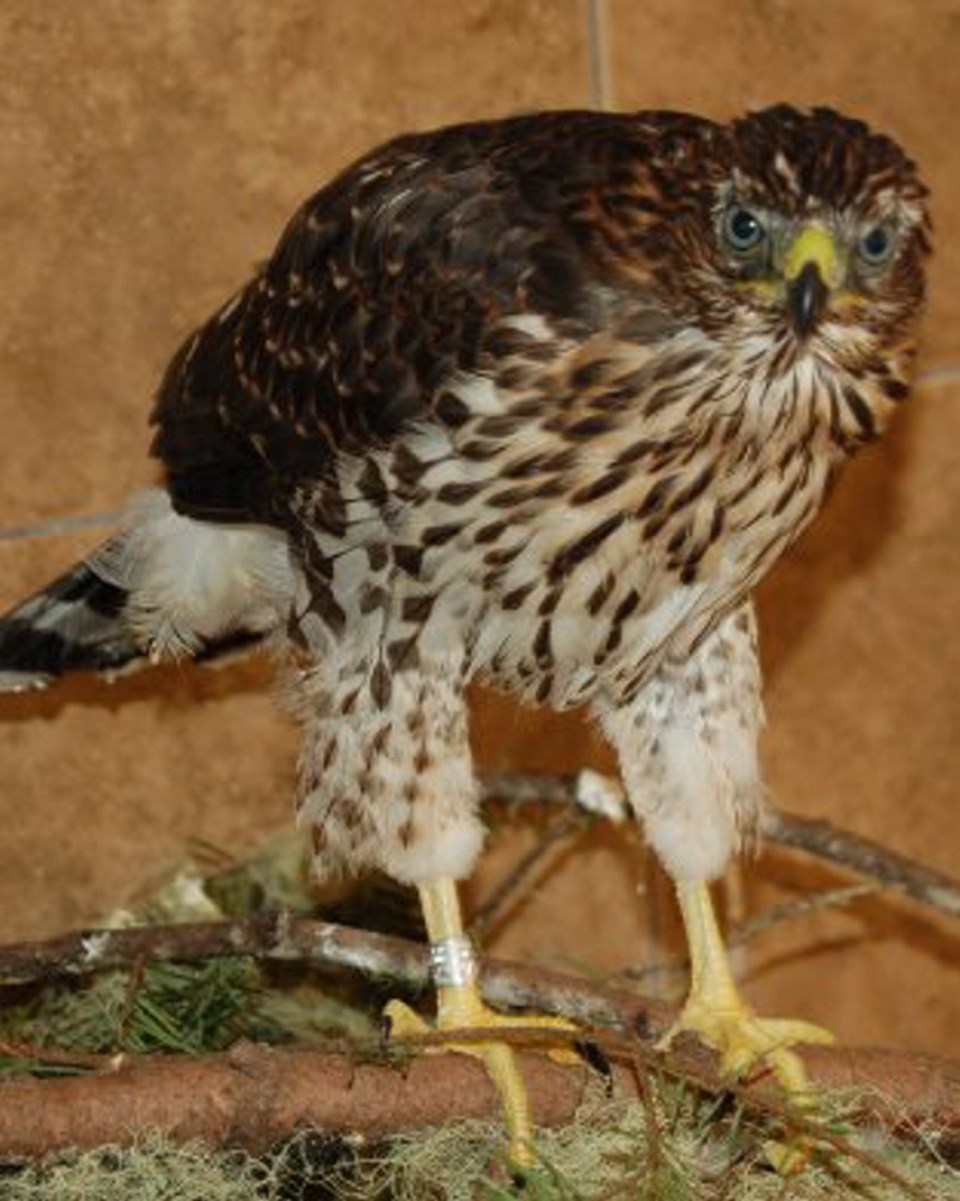A Vancouver Island hawk is the first raptor to join the list of species believed to spread Lyme disease.
Research scientist John Scott said the Cooper’s hawk was found with 22 ticks on it, four of which were infected with the bacteria that causes Lyme disease. It’s the first raptor, or bird of prey, known to host the bacteria.
“This is the first report of ticks on a Cooper’s hawk,” said research scientist John Scott from Fergus, Ont., where he works for the Lyme Disease Association of Ontario.
“It’s the first in the world, really.”
The Cooper’s hawk was found on a doorstep in Oak Bay on Oct. 29, 2012, after it likely flew into a window. It was delivered to the Wild Animal Rehabilitation Centre in Metchosin, where it was examined.
“It was alert and in fair condition, but its right eye was closed. That’s where the ticks were found — around the eye and ear,” Wild ARC manager Kari Marks said.
Wild ARC sent the ticks to Scott, who is conducting a nationwide study of Lyme disease, an inflammatory infection that spreads to humans through tick bites. Symptoms range from flu-like symptoms to neurological illnesses, including paralysis.
There are at least six species of ticks on Vancouver Island, Scott said, five of which are involved in the transmission of Lyme disease.
One of those ticks, known as I. auritulus, lives primarily on wild birds. It does not infect humans directly, but it is “heavily involved” in the cycling of the bacteria that causes Lyme disease, called Borrelia burgdorferi.
“Even though this tick doesn’t bite humans, it perpetuates the infection and helps hold it in nature,” Scott said. “It helps build the population or infection in the tick population.”
Among the infected ticks found on the hawk were larval ticks. Since they were too young to have their first blood meal, Scott said it means the hawk passed on the disease.
“We believe, based on all the information we have, that Cooper’s hawk is a reservoir host. That means that it’s holding infection in its body,” he said.
Other known reservoir hosts include songbirds, deer mice and rabbits.
Wildlife rehabilitation centres across the country have sent Scott more than 1,000 ticks, found on 172 hosts, for his two-year study. Researchers in Connecticut and Georgia are also contributing to the study.
“I’m frankly surprised at what we’re finding that we didn’t know before, in terms of what ticks are on what mammals. And I’m getting a lot of surprises in your area, too,” Scott said.
He has identified ticks normally found in Eastern Canada as far west as Vancouver Island.
Kamloops-based researcher John Gregson completed the last nationwide study 50 years ago.
“We’re finding a lot of stuff that he didn’t come up with 50 years ago, so that creates a spark,” Scott said.
“And truly, it’s important because we’re testing these ticks for Lyme disease bacteria and we’re finding, to our surprise, that a lot of them are infected when we didn’t think they would be.”



